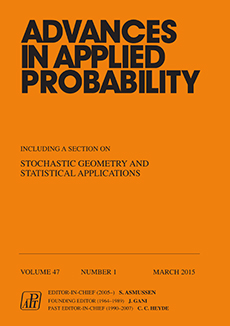Abstract
Branching processes in random environments have been widely studied and applied to population growth systems to model the spread of epidemics, infectious diseases, cancerous tumor growth, and social network traffic. However, Ebola virus, tuberculosis infections, and avian flu grow or change at rates that vary with time—at peak rates during pandemic time periods, while at low rates when near extinction. The branching processes in generalized autoregressive conditional environments we propose provide a novel approach to branching processes that allows for such time-varying random environments and instances of peak growth and near extinction-type rates. Offspring distributions we consider to illustrate the model include the generalized Poisson, binomial, and negative binomial integer-valued GARCH models. We establish conditions on the environmental process that guarantee stationarity and ergodicity of the mean offspring number and environmental processes and provide equations from which their variances, autocorrelation, and cross-correlation functions can be deduced. Furthermore, we present results on fundamental questions of importance to these processes—the survival-extinction dichotomy, growth behavior, necessary and sufficient conditions for noncertain extinction, characterization of the phase transition between the subcritical and supercritical regimes, and survival behavior in each phase and at criticality.
Citation
Irene Hueter. "Branching processes in generalized autoregressive conditional environments." Adv. in Appl. Probab. 48 (4) 1211 - 1234, December 2016.
Information





